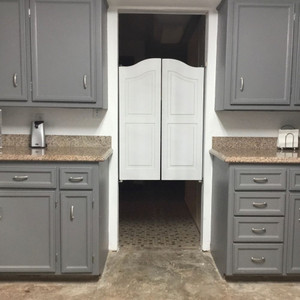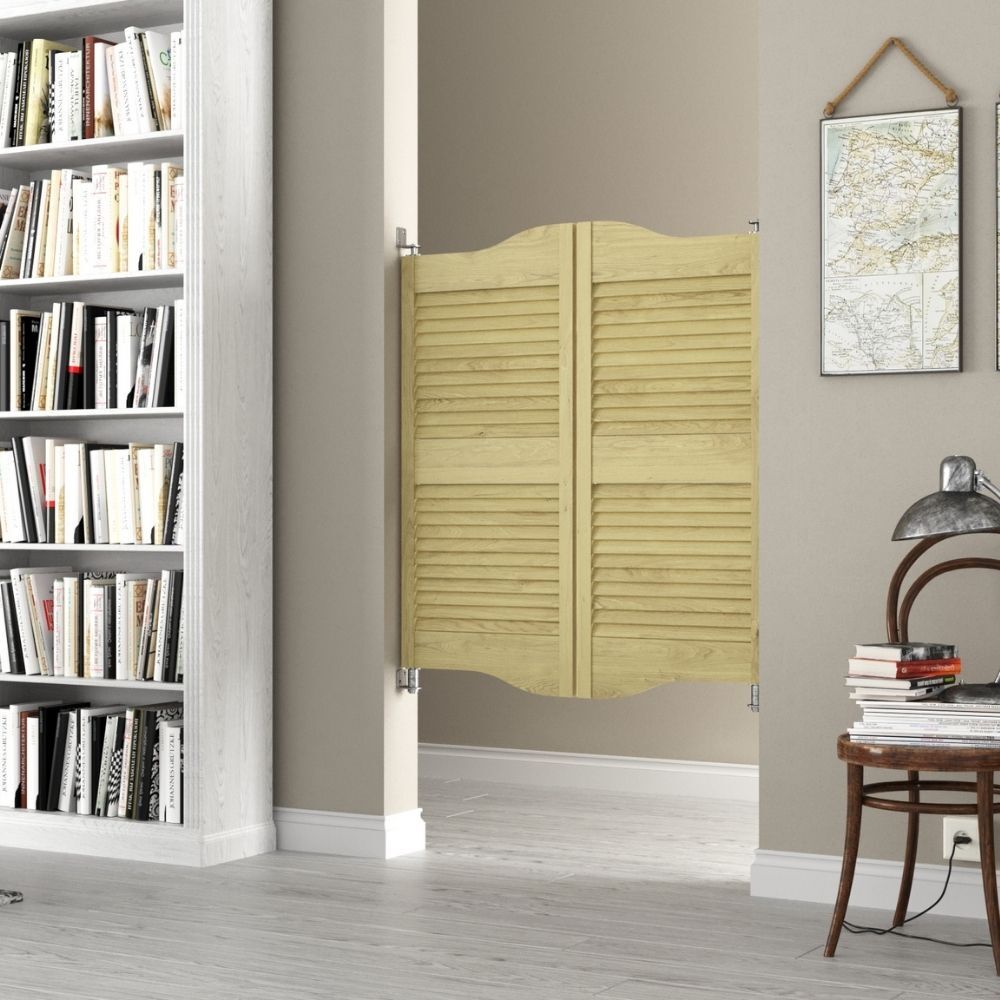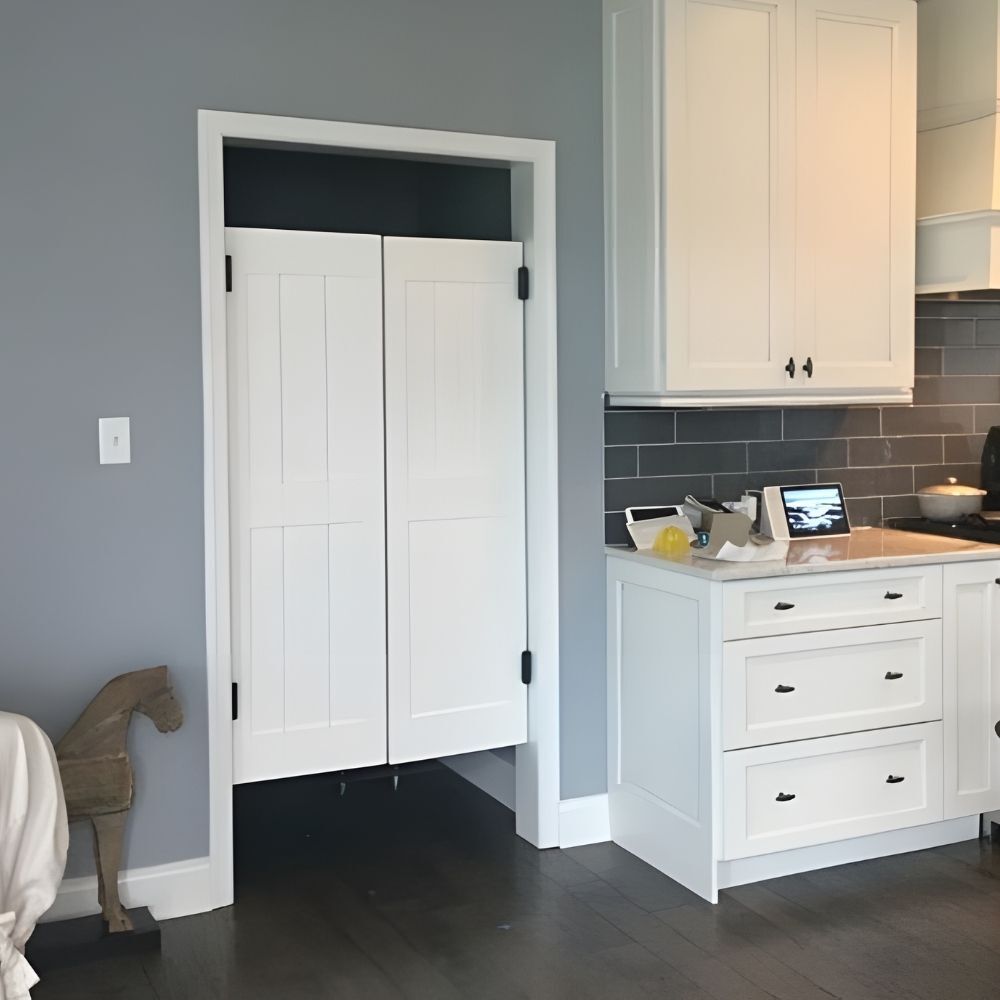
10 Causes of Binding and Sagging in Swing Doors
Swing doors are a popular choice for residential and commercial spaces, offering convenience and easy access between rooms. However, even the highest-quality swing doors can develop problems over time.
Key Takeaways:
- Improper installation, undersized or low-quality hardware, and added door weight can overload the system and cause binding and sagging.
- Building settlement, structural movement, frame distortion, and temperature/humidity swings push doors and frames out of alignment.
- Hinge wear, material degradation, and poor maintenance (incorrect/insufficient lubrication, delayed repairs) turn minor issues into major failures.
Swing doors can become difficult to operate when they begin to bind or sag, creating gaps that affect temperature control and even pose safety concerns. These issues don’t happen overnight, but rather develop gradually due to various factors, ranging from normal wear and tear to environmental conditions. You can take preventive measures and address problems before they escalate into severe issues by identifying the root causes early. Let’s explore ten causes of binding and sagging in swing doors.
Worn or Damaged Hinges
The hinges are the foundation of any swing door’s operation, and when they begin to wear out, the entire door system suffers. Metal fatigue in hinges occurs when the material reaches its stress limit after repeated use. The width and weight of the door, combined with the rotational forces during opening and closing, eventually cause the hinge components to deform or develop play. Loose and worn hinges cannot properly support the door’s weight, leading to sagging and binding against the frame.
Environmental factors also contribute to hinge deterioration. Moisture, temperature fluctuations, and exposure to cleaning chemicals can cause corrosion and rust, which interfere with smooth operation. Regular maintenance and timely replacement of worn hinges are crucial for preventing these issues from affecting door performance.
Improper Installation
Improperly aligned swing doors create stress points that lead to premature wear and operational issues. The door frame must be perfectly square and level to ensure the door functions properly.
Insufficient support during installation can cause doors to settle unevenly, creating binding points where the door rubs against the frame. This is particularly common when installers fail to account for the door’s weight distribution or when they use inadequate fasteners for the specific door type and frame material.
The use of incorrect hardware during installation also leads to long-term problems. You can prevent these issues by hiring a professional to complete the installation and following the manufacturer's specifications for routine maintenance.
Building Settlement
As foundations settle and building materials adjust to environmental conditions, door frames can shift out of their original alignment. This movement creates stress on swing doors, causing them to bind or sag as they no longer fit properly within their frames.
This shifting is particularly noticeable in new construction, where the structure is still adjusting to its permanent position. However, even established buildings experience ongoing settlement due to soil conditions, seasonal fluctuations, and the natural aging of materials. These gradual changes can cause door frames to become out of square, creating binding points and operational difficulties.
Seismic activity and vibrations from nearby construction or heavy traffic can accelerate settlement processes. Door frames may shift more rapidly than normal when buildings experience these forces, requiring more frequent adjustments to maintain proper door operation.
Temperature and Humidity Changes
Temperature and humidity fluctuate, causing materials to expand and contract. Wood doors are particularly susceptible to these changes, as they absorb and release moisture from the surrounding air. This constant movement can cause doors to swell during humid conditions and shrink during dry periods.
Metal doors and frames also respond to temperature changes, though typically to a lesser degree than wood. However, metal expansion in extreme temperature conditions can create binding points that cause binding and sagging in swing doors. The varying expansion rates of different materials in the door system can create stress points that lead to operational issues.
Excessive Weight Load
Your swing doors can exceed their design capacity when they are overloaded with excessive weight from hardware, decorative elements, or modifications. This additional weight places extra stress on hinges, frames, and the door’s structure.
Adding glass panels, decorative hardware, or reinforcement materials and performing other modifications can significantly increase weight beyond the original design specifications. These modifications may require additional support or upgraded hardware to maintain proper operation.
Frame Distortion
Door frames can become distorted, creating an environment where properly functioning doors begin to bind or sag. Structural loads from above can cause frames to compress or shift, changing the opening dimensions and creating interference points. Frame distortion is particularly common in older buildings where structural components may have weakened over time.
Moisture damage to frame materials can cause swelling, warping, or rot, which affects the frame’s ability to properly support the door. Compromised frame components may fail to provide adequate support for the hinges and door weight, resulting in operational problems.
Impact damage from moving furniture, equipment, or normal wear and tear can also cause frame distortion. Even minor impacts can affect frame alignment, creating binding points that worsen over time as the door continues to operate against the damaged frame.
Inadequate Hardware
The quality and appropriateness of door hardware can directly impact long-term performance. Undersized hardware for the door’s weight and usage requirements will prematurely fail, causing binding and sagging in swing doors.
Cheap or low-quality hardware may initially appear to function properly, but will deteriorate rapidly under normal use. Mismatched hardware components can create compatibility issues that affect door performance, especially when replacing individual components rather than complete hardware sets.
Structural Movement
Buildings naturally experience structural movement due to various factors, including foundation settling, thermal expansion, and load redistribution. This movement can affect door frames, causing binding and sagging in swing doors.
Load changes in building structures can cause frames to shift position relative to their original installation. The structural loads may redistribute in ways that affect the door frame’s alignment when you install new equipment or modify walls around the swing door. These changes can create stress points that interfere with the door’s proper operation.
Wind loads and building sway in tall structures can also contribute to structural movement that affects door performance. While buildings can handle these forces, the cumulative effect can cause gradual changes in door frame positioning.
Poor Maintenance Practices
Neglecting proper maintenance practices can accelerate deterioration. Over-lubrication of hinges can attract dirt and debris, creating a grinding paste that increases wear. Conversely, a lack of lubrication causes metal-on-metal contact, which rapidly wears out hinge components.
Incorrect cleaning methods can damage door finishes and hardware, leading to premature failure. Harsh chemicals or abrasive cleaning materials can corrode metal components and damage seals, creating entry points for moisture and contaminants.
Delayed repairs often lead to major issues. The problems typically worsen and may require more extensive repairs if you defer small adjustments or component replacements. Regular inspection and prompt attention to minor issues prevent costly major repairs.
Material Degradation
All door materials have finite lifespans and will eventually degrade to the point where they affect door performance. Wood doors may develop rot, warping, or insect damage that compromises their structural integrity. Metal doors can experience corrosion, particularly in harsh environments or coastal areas.
Finish deterioration can expose underlying materials to environmental damage, accelerating the degradation process. The door’s materials become vulnerable to moisture, UV radiation, and other environmental factors that can cause structural damage when protective coatings fail.
Resolving Swing Door Issues
Understanding these ten causes of binding and sagging in swing doors is the first step toward maintaining properly functioning doors throughout their service life. You can prevent many of these issues through proper installation, regular maintenance, and prompt attention to developing problems.
Consider your application’s specific requirements when selecting replacement swing doors or hardware. Commercial establishments with high traffic volumes may benefit from heavy-duty saloon doors for sale, specifically designed for frequent use. A professional assessment can help you determine the most suitable solutions for your specific situation.


